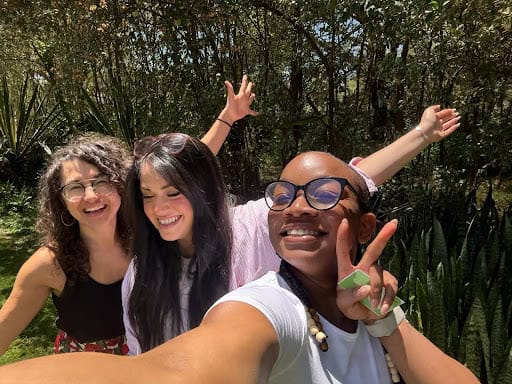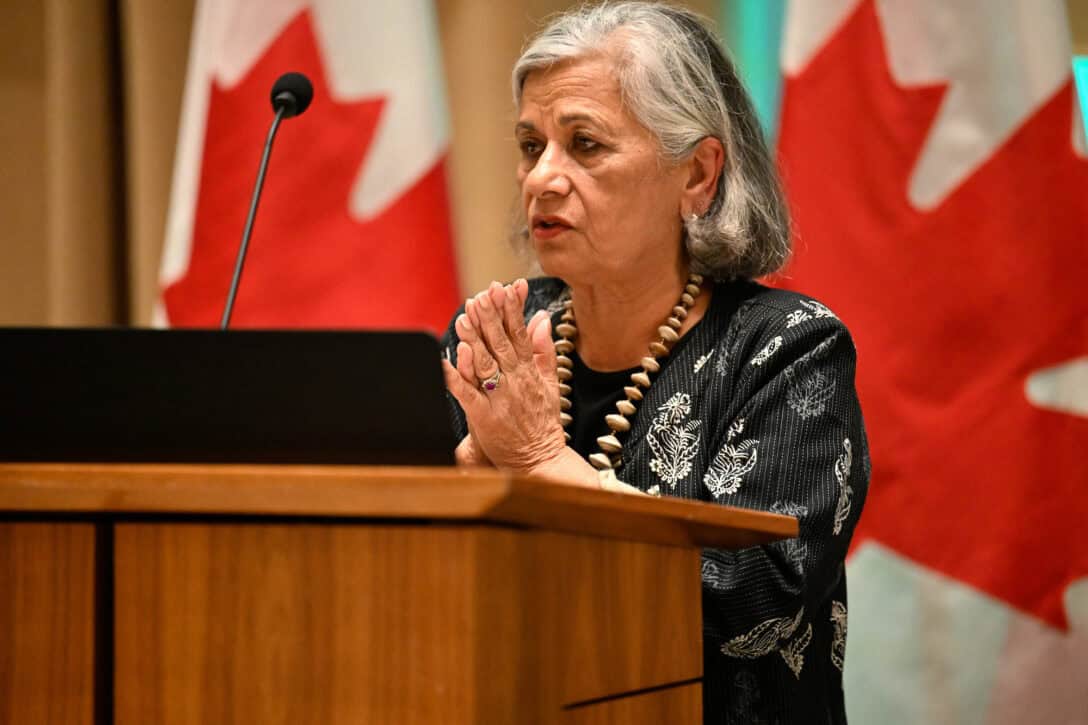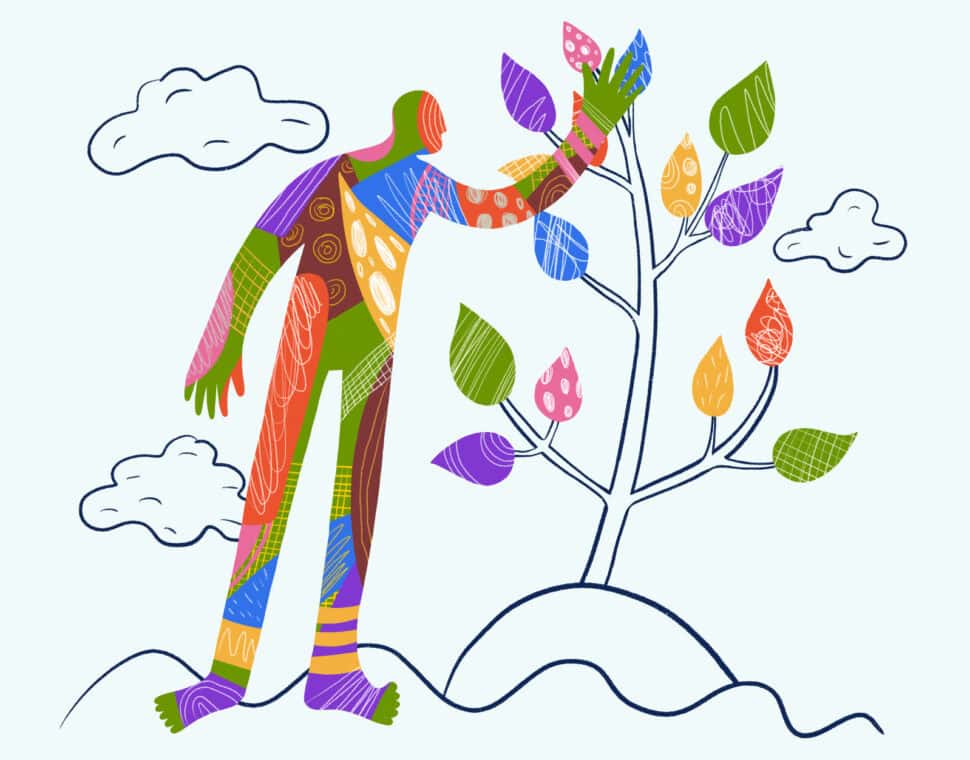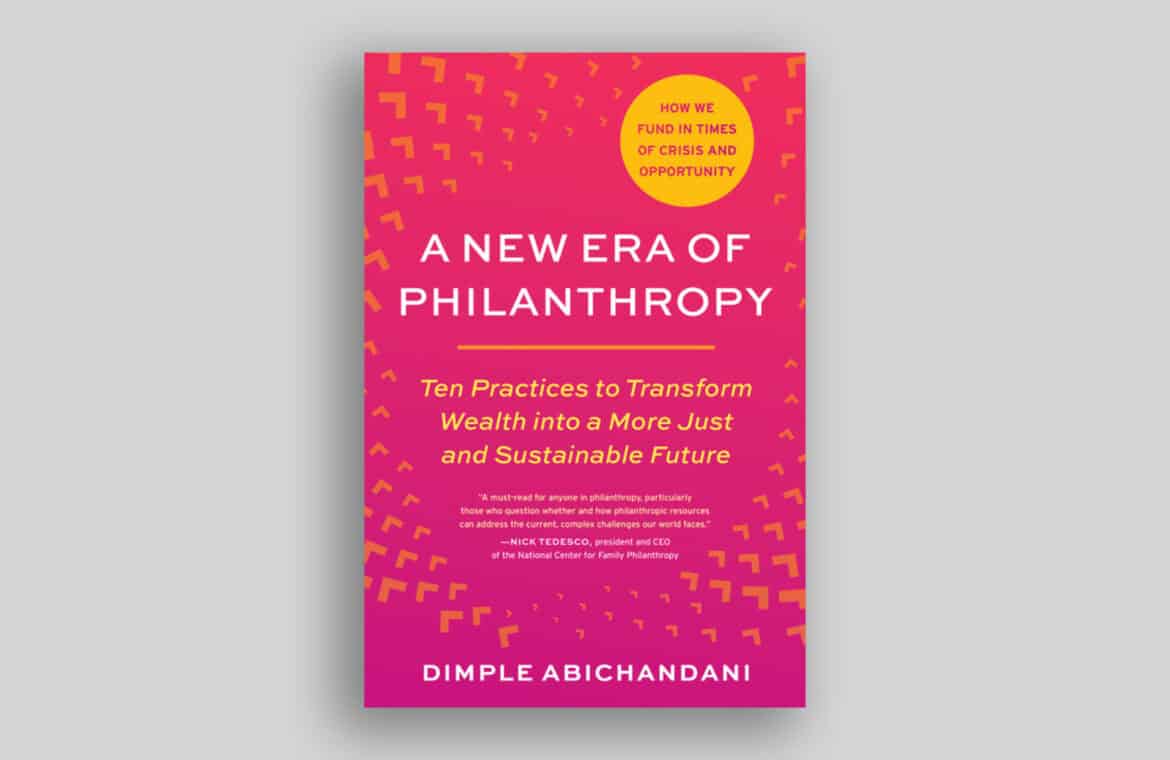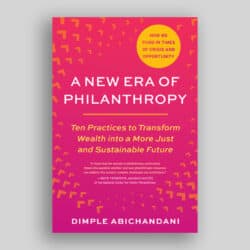The power of unrestricted support: A story of Indigenous strength and sovereignty
At the 25th International Funders for Indigenous Peoples Global Conference in Kenya, one theme stood out, Rachael Sonola writes: Indigenous sovereignty is not just about land or governance; it is about the power to decide, to shape, and to thrive on our own terms.
Ratna Omidvar has left the Senate, but she’s not going away
In conversation with Philanthropist Journal writers Tim Harper and Aiden Cyr, Omidvar discusses her legacy in the upper chamber, a lifetime of advocating for the underdog, and passing the baton to new champions of the non-profit sector.
Ellen Gabriel: 35 years after the so-called Oka Crisis
More than three decades after the Mohawk Resistance at Kanesatake, the activist, artist, and filmmaker who was on the front lines doesn’t see much progress in Canada’s treatment of Indigenous Peoples. She hopes her new book will help educate Canadians.
Foreign aid isn’t optional – it’s infrastructure
We often frame international aid as charity, a nice-to-have when the books balance, Plan Canada’s Lindsay Glassco writes. But in a deeply connected world, shaped by conflict, climate, and contagion, investing in resilience elsewhere is a strategic way to reinforce it here.
Featured
Analysis
Financial advisors are talking to Canadians about money – but are they talking about charity?
Death is a delicate subject, but with the biggest intergenerational wealth transfer in history underway, the charitable sector is realizing it needs to build bridges with financial advisors as they help Canadians write their wills.
Building collective care and collective power: Lessons learned from anti-violence workers
Organizations should look to innovative solutions and promising practices in the anti-violence sector to transform workplaces and address labour issues, researcher Krys Maki explains.
Philanthropy and Funding
Church communities: Conduits for community development
Churches contribute significantly to the economy and represent 40% of registered charities in Canada. Contributor Yvonne Rodney offers snapshots of four organizations: their work, the breadth of services provided, and the potential loss if they were to close.
Philanthropy for a new era
In this optimistic new book, Dimple Abichandani writes that philanthropy’s purpose must evolve from “gilding – lightly covering up systemic challenges – to alchemy – investing in a true transformation of these systems,” offering some practical ideas for how foundations can rethink their practice.
Case Studies & Guides
Building communities where youth can step into the spaces where they belong
The Kickback Foundation’s vision is to create worlds and opportunities where kids have the space and support they need to explore their own journeys and define themselves – using sneakers as a magnet.
Why we need space for grief
Despite its profound ripple effects on families, workplaces, and communities, grief remains an overlooked crisis. An immersive public art installation that creates a space for collective mourning is part of a broader movement to change the ways communities and societies address, plan, and design for grief.
Decolonization and Reconciliation
Can the non-profit sector adopt voluntary standards to improve its data problem?
Strengthening data literacy, expanding data capacity, and improving data-driven strategies has been a rising priority in the sector. Is the solution in community-led best practices, or does the sector need more?
Narrowing the racial wealth gap: Planned giving as a tool for economic justice
Estate planning remains an overlooked tool for closing the racial wealth gap. By fostering accessibility and trust, planned-giving professionals can contribute to economic justice while strengthening the future of philanthropy.
Series on Work in Progress
Volunteerism: In crisis or at a crossroads?
With volunteering in Canada in decline, contributor Yvonne Rodney looks at the data and talks to sector leaders to ponder the way forward. The solution, she writes, includes acknowledging the impact of the pandemic, understanding generational differences, and convincing funders to do more to help organizations.
The decision to step down: Reflections from four foundation leaders
When long-serving leaders leave their roles, what can we learn from them that will help our sector traverse the challenging times ahead?
Building a sense of belonging and connection at work in the hybrid era
With remote and hybrid work the new norm post-pandemic, non-profits are tailoring strategies to ensure that employees feel heard, seen, and valued – and have discovered that there’s no one-size-fits-all approach.
Subscribe
Canadian non-profit sector news, in your inbox
Never miss news and analysis by and for the Canadian non-profit sector
Most Popular
Analysis
How Black-led community land trusts are connecting Black communities with lost land across Canada
With their collective ownership model, community land trusts have the opportunity to work with provincial and federal governments to provide affordable housing and community hubs to marginalized communities.
Filling the gap? The pressure on philanthropy in the fragile eldercare system
Should philanthropy serve as a complement to or a substitute for the state’s obligations to the elderly? Researchers share what they learned from the role of philanthropy in Quebec’s eldercare system during the COVID-19 pandemic.
In an election like no other, an anxious non-profit sector meets its own ‘elbows up’ moment
With a looming recession and increased attacks on civil society, Canadian sector leaders report that there is a resolve – a sense that if a fight is ahead, it is a fight worth having.
Gift planning: Not just for wealthy grandparents
Billions of dollars flow from Canadians to charities through their wills. Now, gift planners say charities need to be thinking a lot more about it as a fundraising strategy – across all demographics.
More articles From the Archives
A short history of voluntary sector–government relations in Canada (revisited)
The original version of this story, published in 2007, is one of The Philanthropist Journal’s most popular pieces of all time. In this updated version, Peter Elson and Peyton Carmichael expand on that detailed (and not so short) history.
Charities and the rule against perpetuities
Charitable status is a legally privileged status. The law in numerous ways, ranging from the trivial to the noteworthy, confers legal advantages upon charities. These legal advantages are often misunderstood.
‘We don’t have a word for philanthropy’
What do Indigenous Peoples mean when they talk about Indigenous philanthropy? Miles Morrisseau put this question and others to Indigenous people who are leaders in the philanthropic sector.
Strategies for a caring society
This article was developed from a paper presented at Investigating in the Whole Community: Strategies for a Caring Society, a conference organized by the Trillium
Featured Contributors
-
Angela Long
Angela Long is a freelance writer currently working on a book about rural journalism in Canada.

-
Yvonne Rodney
Yvonne Rodney is a Toronto author, career consultant, speaker, and non-profit worker with extensive experience in career development. She is the author of Moving On: A Quick Guide for Non-Profit Workers and Military to Civilian Employment: A Career Practitioner’s Guide.

-
Christina Palassio
Christina Palassio is a non-profit communications professional and freelance writer. When she tweets, she does so at @mcpalassio.

-
Tim Harper
Tim Harper is a Toronto-based writer. He is a former Washington correspondent and national affairs columnist with the Toronto Star.

- All Featured Contributors
